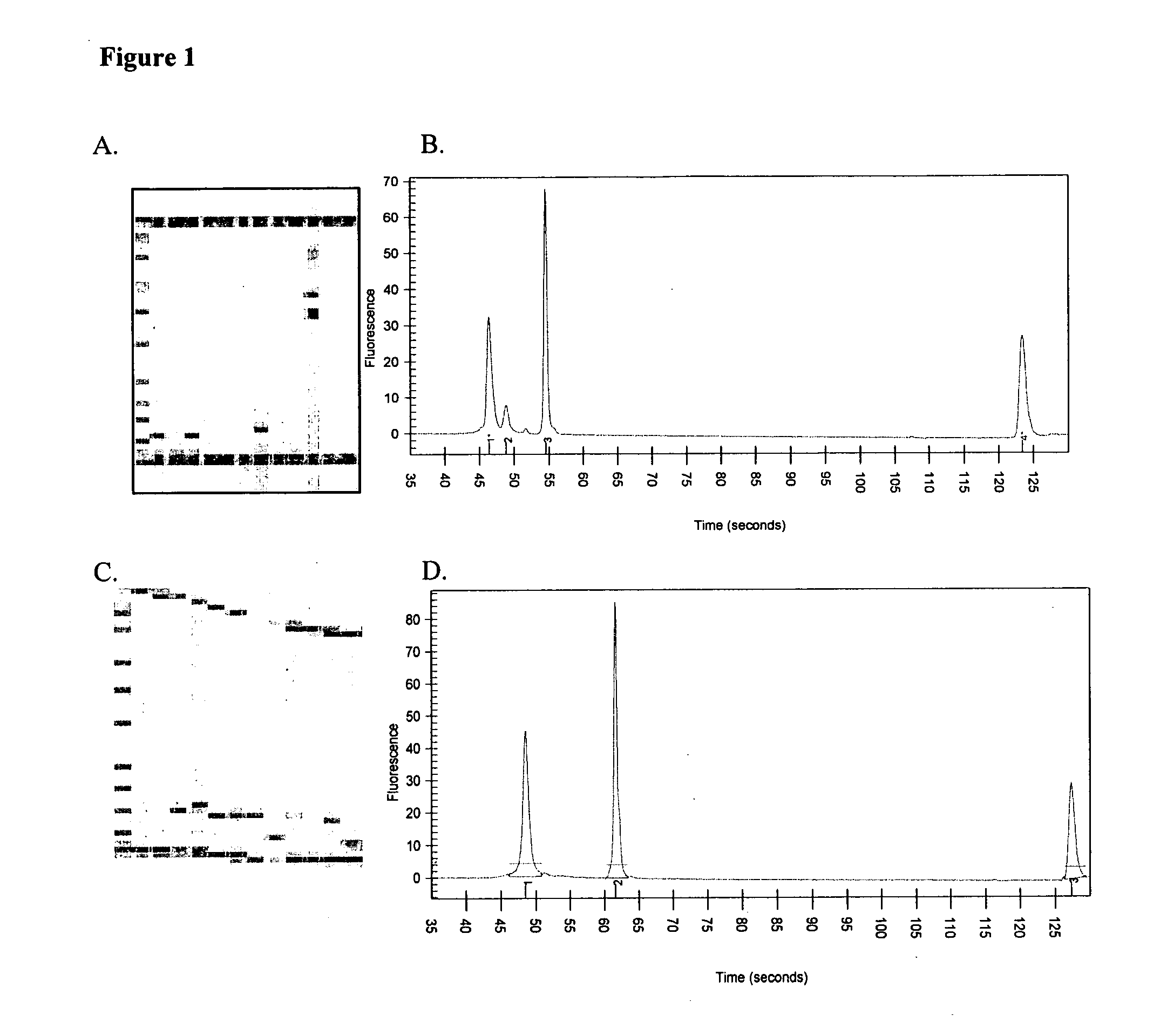Genes useful for diagnosing and monitoring inflammation related disorders
a technology of genes and disorders, applied in the field of expression profiling for monitoring organ transplantation and inflammation related disorders, can solve problems such as process damage to allografts
- Summary
- Abstract
- Description
- Claims
- Application Information
AI Technical Summary
Benefits of technology
Problems solved by technology
Method used
Image
Examples
example 1
Discussion of Data Validating the Four Genes
[0253] The four diagnostic genes disclosed herein were identified and validated using the methods described in the Examples section. This Example 1 summarizes the results of that validation. These four diagnostic genes may be used alone, with each other, or with additional diagnostic genes to monitor inflammation related disorders as described herein. The techniques described in these Examples as well as other techniques known to those of skill in the art may be used to identify diagnostic gene sets and diagnostic oligonucleotide sets that include the four diagnostic genes of the present invention that are particularly effective in monitoring various inflammation related disorders.
[0254] Definition of HR and Q.
[0255]“High-grade Rejection” (HR) for a sample is defined by an ISHLT biopsy rejection grade of 3A or greater (i.e. 3A, 3B or 4) as called by at least 2 of the 4 local and central cardiac pathologists
[0256]“Quiescent” (Q) for a s...
example 2
Preparation of RNA from Mononuclear Cells for Expression Profiling
[0263] Blood was isolated from the subject for leukocyte expression profiling using the following methods:
[0264] Two tubes were drawn per patient. Blood was drawn from either a standard peripheral venous blood draw or directly from a large-bore intra-arterial or intravenous catheter inserted in the femoral artery, femoral vein, subclavian vein or internal jugular vein. Care was taken to avoid sample contamination with heparin from the intravascular catheters, as heparin can interfere with subsequent RNA reactions.
[0265] For each tube, 8 ml of whole blood was drawn into a tube (CPT, Becton-Dickinson order #362753) containing the anticoagulant Citrate, 25° C. density gradient solution (e.g. Ficoll, Percoll) and a polyester gel barrier that upon centrifugation was permeable to RBCs and granulocytes but not to mononuclear cells. The tube was inverted several times to mix the blood with the anticoagulant. The tubes were...
example 3
Preparation of Universal Control RNA for use in Leukocyte Expression Profiling
[0270] Control RNA was prepared using total RNA from Buffy coats and / or total RNA from enriched mononuclear cells isolated from Buffy coats, both with and without stimulation with ionomycin and PMA. The following control RNAs were prepared: [0271] Control 1: Buffy Coat Total RNA [0272] Control 2: Mononuclear cell Total RNA [0273] Control 3: Stimulated buffy coat Total RNA [0274] Control 4: Stimulated mononuclear Total RNA [0275] Control 5: 50% Buffy coat Total RNA / 50% Stimulated buffy coat Total RNA [0276] Control 6: 50% Mononuclear cell Total RNA / 50% Stimulated Mononuclear Total RNA
[0277] Some samples were prepared using the following protocol: Buffy coats from 38 individuals were obtained from Stanford Blood Center. Each buffy coat is derived from ˜350 mL whole blood from one individual. 10 ml buffy coat was removed from the bag, and placed into a 50 ml tube. 40 ml of Buffer EL (Qiagen) was added, the ...
PUM
| Property | Measurement | Unit |
|---|---|---|
| concentration | aaaaa | aaaaa |
| temperatures | aaaaa | aaaaa |
| humidity | aaaaa | aaaaa |
Abstract
Description
Claims
Application Information
 Login to View More
Login to View More - R&D
- Intellectual Property
- Life Sciences
- Materials
- Tech Scout
- Unparalleled Data Quality
- Higher Quality Content
- 60% Fewer Hallucinations
Browse by: Latest US Patents, China's latest patents, Technical Efficacy Thesaurus, Application Domain, Technology Topic, Popular Technical Reports.
© 2025 PatSnap. All rights reserved.Legal|Privacy policy|Modern Slavery Act Transparency Statement|Sitemap|About US| Contact US: help@patsnap.com



